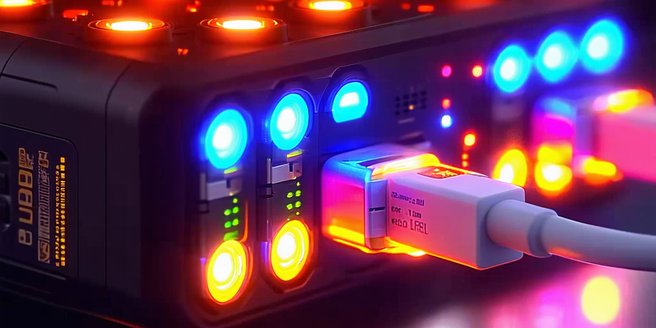Ultra-fast Charging Devices

Understanding Ultra-fast Charging Technology
Ultra-fast charging technology is revolutionizing the way we power our devices, delivering unprecedented speed and efficiency. Unlike traditional chargers, these devices utilize advanced power delivery systems to significantly reduce charging times. They operate by increasing the power throughput to the battery, often by using higher voltage levels or employing multiple power channels to distribute energy more effectively. This technology is particularly beneficial for electric vehicles and high-capacity gadgets, where charging time can be a significant limitation. Moreover, ultra-fast chargers are designed to maintain the integrity and longevity of the battery by employing smart charging algorithms that monitor temperature and charge state. As research in this field continues to advance, we can expect even faster and more efficient solutions to become available, further easing our reliance on traditional power sources.
Benefits of Ultra-fast Charging Devices
Ultra-fast charging devices offer numerous benefits, making them increasingly attractive to consumers and industries alike. Firstly, the primary advantage is the significant reduction in charging time, allowing users to get back to using their devices with minimal downtime. This is a crucial factor for electric vehicles, where charging speed can directly impact travel plans and convenience. Additionally, these chargers can often be more energy-efficient, as they are designed to maximize power delivery while minimizing waste. The convenience factor is further enhanced by the compatibility of many ultra-fast chargers with a range of devices, from smartphones to laptops, providing a versatile solution for multiple needs. Furthermore, the integration of smart technology ensures that the charging process does not compromise battery health, offering peace of mind and extended lifespan for devices.
Top Brands Leading the Charge in Ultra-fast Technology
Several top brands are at the forefront of ultra-fast charging technology, each bringing unique innovations to the market. Tesla, known for its electric vehicles, has pioneered Supercharger technology, enabling rapid charging across its extensive network. Similarly, companies like Qualcomm and Samsung are investing heavily in developing fast-charging technologies for mobile devices. Qualcomm’s Quick Charge and Samsung’s Adaptive Fast Charging are leading examples of how traditional tech giants are evolving alongside consumer demands. In the smartphone industry, OnePlus and Oppo have made significant strides with their proprietary rapid-charging systems, offering some of the fastest charging solutions available. These brands are consistently pushing the boundaries of technology to deliver faster, more efficient charging options, enhancing user experience and setting benchmarks for the industry.
How Ultra-fast Charging Devices Work
Ultra-fast charging devices operate through a combination of higher power delivery and sophisticated technology. They utilize advanced power management systems that can safely increase the electrical current flowing into the device’s battery. This is achieved by using higher voltage levels and more robust power management chips that regulate the current to optimize charging speed without causing damage. The key is the integration of smart technology capable of communicating with the device to adjust the power output dynamically. These systems monitor various parameters, such as temperature and charge levels, to provide optimal power input that maximizes speed while maintaining safety. Advances in lithium-ion battery technology and cooling systems further aid in handling the increased power, ensuring the devices remain operational and efficient during the rapid charging process.
The Future of Charging: What’s Next?
The future of charging technology promises even more exciting developments as research continues to forge new paths. Emerging trends point towards increased charging speed capabilities, coupled with innovations aiming to reduce costs and environmental impact. Wireless charging could see a major boost, eliminating the need for cables and enabling charging over distances. Furthermore, the integration of artificial intelligence in charging systems could optimize power delivery and battery management, learning user habits to enhance efficiency and effectiveness. There’s also the potential expansion of charging infrastructures for electric vehicles, making long-distance travel more feasible with shorter stops. With ongoing advancements in battery technology, particularly in solid-state batteries, we can expect even faster, safer, and more sustainable charging solutions to become mainstream, revolutionizing how we power our devices across the board.